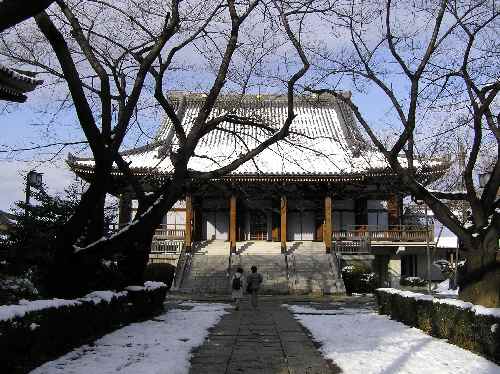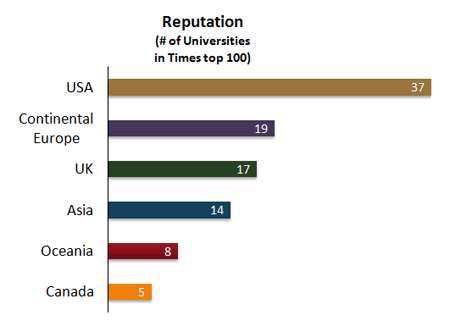|
Imperial Universities
The were founded by the Empire of Japan between 1886 and 1939, seven in Mainland Japan, one in Korea under Japanese rule and one in Taiwan under Japanese rule. These universities were funded by the imperial government until the end of World War II. Historical context The name 'Imperial University' was initially used by what is now the University of Tokyo, the nation's first university. Although it was originally established under its current name, the Government of Meiji Japan, Meiji government renamed it in 1886. In 1897, when it was decided to establish the nation's second university in Kyoto, the original Imperial University was renamed Tokyo Imperial University. Meanwhile, the newly established university was named Kyoto University, Kyoto Imperial University. Unlike in Europe and North America, modern higher education in Japan mostly originated as national projects. There had been no private universities in Japan until 1920, when Keio University, Keio and Waseda University, ... [...More Info...] [...Related Items...] OR: [Wikipedia] [Google] [Baidu] |
Japanese Taiwan
The island of Taiwan, together with the Penghu Islands, became an annexed territory of the Empire of Japan in 1895, when the Qing dynasty ceded Fujian-Taiwan Province in the Treaty of Shimonoseki after the Japanese victory in the First Sino-Japanese War. The consequent Republic of Formosa resistance movement on Taiwan was defeated by Japan with the capitulation of Tainan. Japan ruled Taiwan for 50 years. Its capital was located in Taihoku (Taipei), the seat of the Governor-General of Taiwan. Taiwan was Japan's first colony and can be viewed as the first step in implementing their " Southern Expansion Doctrine" of the late 19th century. Japanese intentions were to turn Taiwan into a showpiece "model colony" with much effort made to improve the island's economy, public works, industry, cultural Japanization (1937 to 1945), and support the necessities of Japanese military aggression in the Asia-Pacific. Japan established monopolies and by 1945, had taken over all the sa ... [...More Info...] [...Related Items...] OR: [Wikipedia] [Google] [Baidu] |
Bunkyō
is a Special wards of Tokyo, special ward in the Tokyo, Tokyo Metropolis in Japan. Situated in the middle of the ward area, Bunkyō is a residential and educational center. Beginning in the Meiji period, literati like Natsume Sōseki, as well as scholars and politicians have lived there. Bunkyō is home to the Tokyo Dome, Judo's Kodokan Judo Institute, Kōdōkan, and the University of Tokyo's Hongō campus, Hongo Campus. It was formed in 1947 as a merger of Hongo and Koishikawa wards following Tokyo City's Local Autonomy Act, transformation into Tokyo Metropolis. The modern Bunkyo ward exhibits contrasting Shitamachi and Yamanote geographical and cultural division. The Nezu and Sendagi neighborhoods in the ward's eastern corner is attached to the Shitamachi area in Ueno. On the other hand, the remaining areas of the ward typically represent Yamanote districts. As of 2022, the ward has a population of 240,069 (including about 8,500 foreign residents), and a population density of . ... [...More Info...] [...Related Items...] OR: [Wikipedia] [Google] [Baidu] |
Tokyo Imperial University,1925
Tokyo, officially the Tokyo Metropolis, is the capital of Japan, capital and List of cities in Japan, most populous city in Japan. With a population of over 14 million in the city proper in 2023, it is List of largest cities, one of the most populous urban areas in the world. The Greater Tokyo Area, which includes Tokyo and parts of six neighboring Prefectures of Japan, prefectures, is the most populous metropolitan area in the world, with 41 million residents . Lying at the head of Tokyo Bay, Tokyo is part of the Kantō region, on the central coast of Honshu, Japan's largest island. It is Japan's economic center and the seat of the Government of Japan, Japanese government and the Emperor of Japan. The Tokyo Metropolitan Government administers Tokyo's central Special wards of Tokyo, 23 special wards, which formerly made up Tokyo City; various commuter towns and suburbs in Western Tokyo, its western area; and two outlying island chains, the Tokyo Islands. Although most of the w ... [...More Info...] [...Related Items...] OR: [Wikipedia] [Google] [Baidu] |
QS World University Rankings
The ''QS World University Rankings'' is a portfolio of comparative college and university rankings compiled by Quacquarelli Symonds, a higher education analytics firm. Its first and earliest edition was published in collaboration with '' Times Higher Education'' (''THE'') magazine as ''Times Higher Education''–QS World University Rankings, inaugurated in 2004 to provide an independent source of comparative data about university performance. In 2009, the two organizations parted ways to produce independent university rankings, the QS World University Rankings and ''THE'' World University Rankings. QS's rankings portfolio has since been expanded to consist of the QS World University Rankings, the QS World University Rankings by Subject, four regional rankings tables (including Asia, Latin America and The Caribbean, Europe, and the Arab Region), several MBA rankings, and the QS Best Student Cities rankings. In 2022, QS launched the QS World University Rankings: Sustainability ... [...More Info...] [...Related Items...] OR: [Wikipedia] [Google] [Baidu] |
Academic Ranking Of World Universities
The ''Academic Ranking of World Universities'' (''ARWU''), also known as the Shanghai Ranking, is one of the annual publications of world university rankings. The league table was originally compiled and issued by Shanghai Jiao Tong University in 2003, making it the first global university ranking with multifarious indicators. Since 2009, ARWU has been published and copyrighted annually by Shanghai Ranking Consultancy, an organization focusing on higher education that is not legally subordinated to any universities or government agencies. In 2011, a board of international advisory consisting of scholars and policy researchers was established to provide suggestions. The publication currently includes global league tables for institutions as a whole and for a selection of individual subjects, alongside independent regional ''Greater China Ranking'' and ''Macedonian HEIs Ranking''. ARWU is regarded as one of the three most influential and widely observed university rankings, al ... [...More Info...] [...Related Items...] OR: [Wikipedia] [Google] [Baidu] |
Times Higher Education World University Rankings
The ''Times Higher Education World University Rankings'', often referred to as the THE Rankings, is the annual publication of university rankings by the ''Times Higher Education'' magazine. The publisher had collaborated with Quacquarelli Symonds (QS) to publish the joint ''Times Higher Education–QS World University Rankings, THE-QS World University Rankings'' from 2004 to 2009 before it turned to Thomson Reuters for a new ranking system from 2010 to 2013. In 2014, the magazine signed an agreement with Elsevier to provide it with the data used in compiling its annual rankings. The publication includes global rankings of universities, including by subject and reputation. It also has begun publishing three regional tables for universities in Asia, Latin America, and BRICS and emerging economies, which are ranked with separate criteria and weightings. The THE Rankings is often considered one of the most widely observed university rankings together with the ''Academic Ranking of ... [...More Info...] [...Related Items...] OR: [Wikipedia] [Google] [Baidu] |
Nagoya University
, abbreviated to or NU, is a Japanese national research university located in Chikusa-ku, Nagoya. It was established in 1939 as the last of the nine Imperial Universities in the then Empire of Japan, and is now a Designated National University. The university is the birthplace of the Sakata School of physics and the Hirata School of chemistry. As of 2021, seven Nobel Prize winners have been associated with Nagoya University, the third most in Japan and Asia behind Kyoto University and the University of Tokyo. History Nagoya Imperial University was established as the last of the Imperial Universities in 1939 and was later renamed Nagoya University in 1947. Although relatively new as a university, it can trace its roots back to a Temporary Medical School/Public Hospital opened in 1871. Renowned for its contributions in physics and chemistry, the university has been the birthplace of notable scientific advancements such as the Sakata model, the PMNS matrix, the Okazak ... [...More Info...] [...Related Items...] OR: [Wikipedia] [Google] [Baidu] |
University Of Osaka
The , abbreviated as UOsaka or , is a national research university in Osaka, Japan. The university traces its roots back to Edo-era institutions Tekijuku (1838) and Kaitokudo (1724), and was officially established in 1931 as the sixth of the Imperial Universities in Japan, with two faculties: science and medicine. Following the post-war educational reform, it merged with three pre-war higher schools, reorganizing as a comprehensive university with five faculties: science, medicine, letters, law and economics, and engineering. After the merger with Osaka University of Foreign Studies in 2007, UOsaka became the largest national university in Japan by undergraduate enrollment. The official name of the university in English has been changed from "Osaka University" to "The University of Osaka (UOsaka)" as of April 2025. UOsaka is one of the most productive research institutions in Japan. Numerous prominent scholars and scientists have attended or worked at UOsaka, such as Nobel ... [...More Info...] [...Related Items...] OR: [Wikipedia] [Google] [Baidu] |
Hokkaido University
, or , is a public research university in Sapporo, Hokkaido, Japan. Founded in 1918, it is the fifth-oldest government-authorised university in Japan and one of the former Imperial Universities. The university finds its roots in Sapporo Agricultural College, which was a pioneer in the country's modern agricultural education and research, founded in 1876. The university's motto is 'Boys, Be Ambitious', which is said to be the parting words of the American dean of the Agricultural College, William S. Clark. The university has 12 undergraduate faculties and 21 postgraduate schools. The university mainly operates on two campuses: the main campus is located in downtown Sapporo, just north of Sapporo Station, and the other campus is located in Hakodate, primarily used by the Faculty of Fishery Sciences. History The history of the university dates to the formal incorporation of Yezo as Hokkaido into the Japanese realm. Director of the Hokkaidō Development Commission Kuroda Kiy ... [...More Info...] [...Related Items...] OR: [Wikipedia] [Google] [Baidu] |
Kyushu University
, abbreviated to , is a public research university located in Fukuoka, Japan, on the island of Kyushu. Founded in 1911 as the fourth Imperial University in Japan, it has been recognised as a leading institution of higher education and research in Kyushu, Japan, and beyond. The history of the university began a few decades before its founding when the medical school of the Fukuoka Domain was established in 1867, the final year of the Edo period. The school was reorganised as the Fukuoka Medical College of Kyoto Imperial University in 1903. It became independent as Kyushu Imperial University in 1911. History In 1867, the Fukuoka Domain established a medical school called ''Sanshikan'' in Tenjin, Fukuoka. Although closed in 1872, its affiliated hospital continued operating and evolved over time. By 1879, it became part of the Fukuoka Prefectural Fukuoka Medical School, later continuing as the Fukuoka Prefectural Fukuoka Hospital. The push for an imperial university in ... [...More Info...] [...Related Items...] OR: [Wikipedia] [Google] [Baidu] |
Tohoku University
is a public research university in Sendai, Miyagi, Japan. It is colloquially referred to as or . Established in 1907 as the third of the Imperial Universities, after the University of Tokyo and Kyoto University, it initially focused on science and medicine, later expanding to include humanities studies as well. In 2016, Tohoku University had 10 faculties, 16 graduate schools and 6 research institutes, with a total enrollment of 17,885 students. The university's three core values are "Research First (研究第一主義)," "Open-Doors (門戸開放)," and "Practice-Oriented Research and Education (実学尊重)." History On 22 June 1907 (Mēji 40), Tohoku Imperial University (東北帝國大學, Tōhoku teikoku daigaku) was established by the Meiji government as the third Imperial University of Japan, after Tokyo Imperial University (1877) and Kyoto Imperial University (1897). From its inception, it advocated 'Open-door' policies, becoming the first university in Japan ... [...More Info...] [...Related Items...] OR: [Wikipedia] [Google] [Baidu] |







